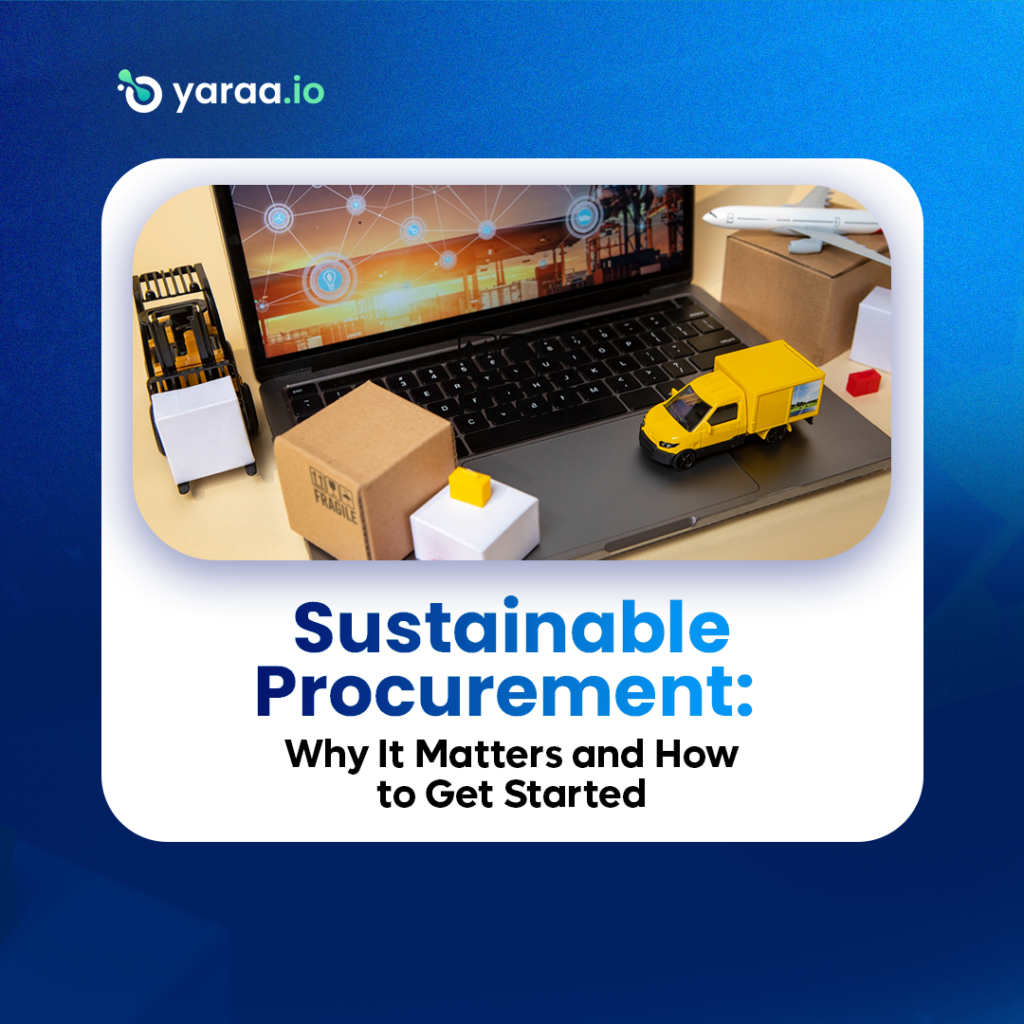Sustainable procurement is the practice of purchasing goods and services in a way that reduces negative social, economic, and environmental impacts while promoting positive outcomes. It is a critical component of any organization’s sustainability strategy.
Sustainable procurement is important because it helps organizations to reduce their environmental footprint, improve their social impact, and enhance their economic performance. In this blog post, we will discuss why sustainable procurement matters and how to get started.
Why Sustainable Procurement Matters
Sustainable procurement matters for several reasons. Firstly, it helps organizations to reduce their environmental footprint. When organizations purchase goods and services sustainably, they can minimize waste, reduce their carbon emissions, and conserve natural resources. For example, organizations can reduce their carbon emissions by choosing suppliers that use renewable energy sources, purchasing goods that have been produced using sustainable methods, and selecting suppliers that prioritize energy efficiency in their operations.
Secondly, sustainable procurement can improve social impact. By selecting suppliers that comply with ethical standards and prioritize social responsibility, organizations can help to promote fair labor practices, human rights, and social justice. For example, organizations can choose suppliers that prioritize fair labor practices, promote diversity and inclusion, and engage in community development activities.
Lastly, sustainable procurement can enhance economic performance. By selecting suppliers that prioritize sustainability and innovation, organizations can improve their reputation, reduce costs, and increase revenue. For example, organizations can improve their reputation by promoting their sustainable procurement practices to stakeholders, reducing their costs by eliminating waste and reducing energy consumption, and increasing revenue by promoting innovation and efficiency in their supply chain.

How to Get Started with Sustainable Procurement
Getting started with sustainable procurement requires a clear understanding of your organization’s procurement processes, stakeholder needs, and sustainability goals.
Here are some steps that organizations can take to get started with sustainable procurement:
1. Conduct a Sustainability Assessment: Start by conducting a sustainability assessment of your procurement processes. This assessment should identify the environmental, social, and economic impacts of your procurement activities, as well as any opportunities for improvement. This assessment can be done internally or with the help of a third-party sustainability consultant.
2. Develop a Sustainable Procurement Policy: Once you have identified the impacts of your procurement activities, develop a sustainable procurement policy that outlines your organization’s commitment to sustainability. This policy should include guidelines for supplier selection, performance evaluation, and reporting, as well as targets for reducing your environmental footprint and improving your social impact.
3. Engage with Suppliers: Engage with your suppliers to understand their sustainability practices and to communicate your organization’s sustainability goals. This engagement should be an ongoing process that includes regular performance evaluations and feedback on areas for improvement.
4. Prioritize Sustainable Products and Services: Prioritize the purchase of products and services that are sustainably produced, use renewable energy sources, and promote social responsibility. This can include products that have been certified by recognized sustainability standards, such as the Forest Stewardship Council or Fair Trade.
5. Monitor and Report on Progress: Monitor and report on your organization’s progress toward achieving your sustainability goals. This can include regular reporting on your environmental footprint, social impact, and economic performance, as well as communication with stakeholders on your sustainability practices.
Also read: 5 KEY SKILLS EVERY PROCUREMENT PROFESSIONAL SHOULD HAVE
Important Additions
In addition to the above steps, here are some important additions that organizations should consider when implementing sustainable procurement practices:
1. Collaboration with Stakeholders: Engage with stakeholders, including customers, suppliers, and employees, to understand their sustainability expectations and to identify areas for improvement. This engagement can help to promote transparency and accountability in your sustainability practices.
2. Integration with Sustainability Strategy: Integrate sustainable procurement practices with your organization’s overall sustainability strategy. This can include aligning your procurement goals with your carbon reduction targets, social impact initiatives, and economic performance targets.
3. Training and Awareness: Provide training and awareness programs to employees and suppliers to promote understanding and implementation of sustainable procurement practices. This can include training on sustainable procurement policies and practices, as well as communication on the benefits of sustainable procurement and its impact on the environment, society, and economy.
4. Use of Technology: Utilize technology to support sustainable procurement practices, such as e-procurement systems that can track sustainability criteria and provide visibility into supplier performance. This can help to improve efficiency and effectiveness in sustainable procurement practices.
5. Continuous Improvement: Implement a continuous improvement process to identify areas for improvement in sustainable procurement practices and to track progress toward sustainability goals. This can include regular reviews of procurement practices and supplier performance, as well as engagement with stakeholders to gather feedback on sustainability initiatives.
Conclusion
Sustainable procurement is a critical component of any organization’s sustainability strategy. Getting started with sustainable procurement requires a clear understanding of your organization’s procurement processes, stakeholder needs, and sustainability goals. By following the steps outlined in this blog post and incorporating important additions, organizations can effectively implement sustainable procurement practices and contribute to a more sustainable future.